Hey there chainsaw NERDS!
Aren’t you tired of dealing with a loose chain every time you want to use your saw?
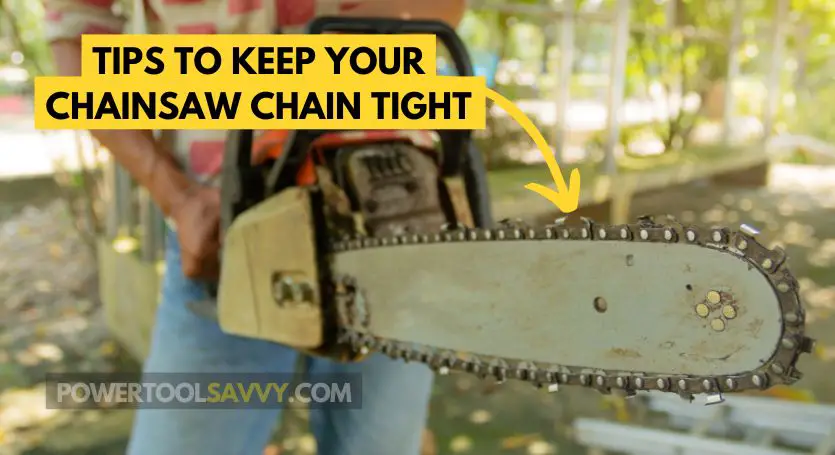
Don’t worry; I’ve got your back! 😎
Here are 7 pro tips to keep your chainsaw chain tight for longer:
- Make sure your chainsaw chain is properly tightened
- Make sure the lubrication system is working
- Keep your chain sharp
- Use a pre-stretched chain instead
- Don’t push your chainsaw hard while cutting
- Take breaks between your cutting sessions
- Avoid cutting dirty wood or hitting the ground
Btw, I’ve been using chainsaws for over 20 years now. And in this article, I’m going to dig deep into each of these tips that will help you keep your chain tight and optimized.
So let’s jump right in!
Table of Contents
ToggleWhy Does a Chainsaw Chain Gets Loose in the First Place? (Don't SKIP!)
Before moving on to the main section, let’s first answer a question that I often get asked by novice chainsawers.
And that is 👉 “What causes a chainsaw chain to get loose?”
Chainsaw chains become slack and lose primarily because of the heat that builds up when the chain rubs against wood (or whatever it’s cutting). This heat causes the metal links to expand, creating a larger gap between them and making it difficult for the chain to maintain its original size and shape.
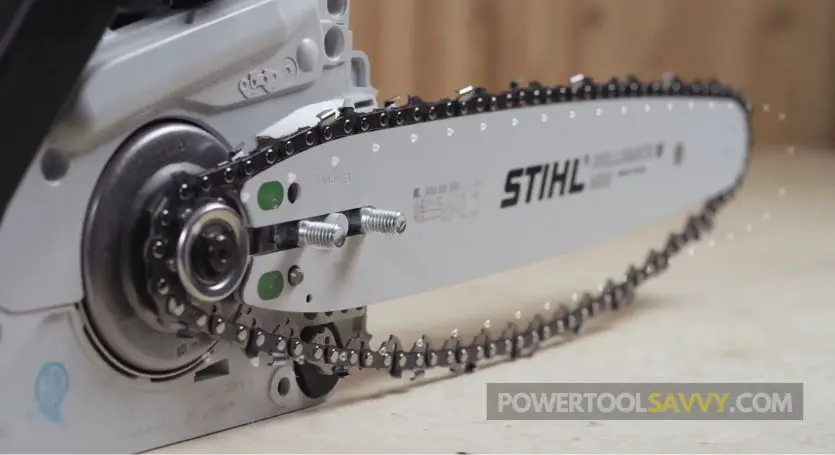
That being the main cause, there are other things that can contribute to a loose chainsaw chain. For instance – 👇
- Incorrect tensioning of the chain,
- Worn out drive sprocket (also known as chain sprocket),
- Improperly sharpened chain,
- Worn out guide bar, (Learn More: How Long Do Chainsaw Bars Last?)
- And poor lubrication of the chain.
All these factors can lead to a loose chainsaw chain. Read this article where I’ve described these issues in more detail and how you can fix them.
Now, let’s move on to the main section!
Tips to Keep Your Chain Tight for Longer
Make Sure Your Chain is Properly Tightened Before You Start Cutting
I know it sounds a bit OBVIOUS, but many folks tend to skip this step!
If your chainsaw chain is not tightened correctly, it won’t stay tight for long. And that’s something you DON’T want!
So, what’s the deal??
Well, you need to make sure that the chain is tight enough before you start cutting.
Here’s how you do it: 👇
GRAB the chain at the bottom of your guide bar with your forefingers and pull it away from the bar rails.
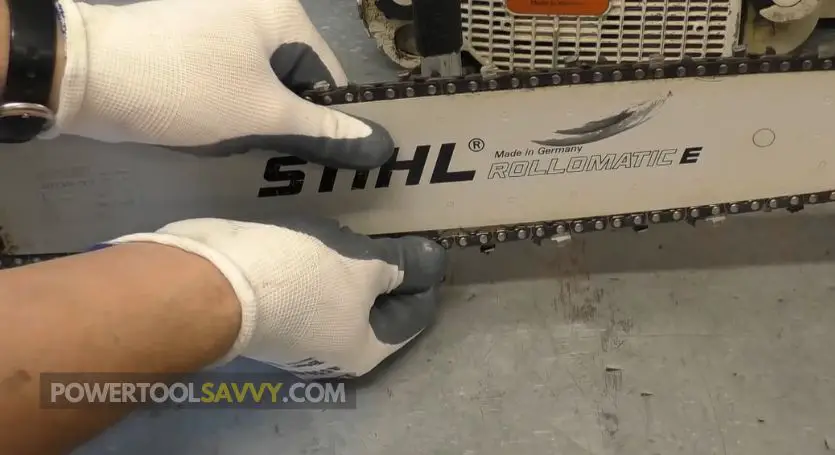
- If the chain SNAPS back with a moderate force when you let go, it’s tight enough (Figure A). This is called the “snap” test! (Caution: Wear protective gloves)
- But if the chain is sagging below the bar and doesn’t go back into place when you let go, it’s too loose (Figure B). In that case, you need to tighten up the chain tension adjuster knob one or two notches.
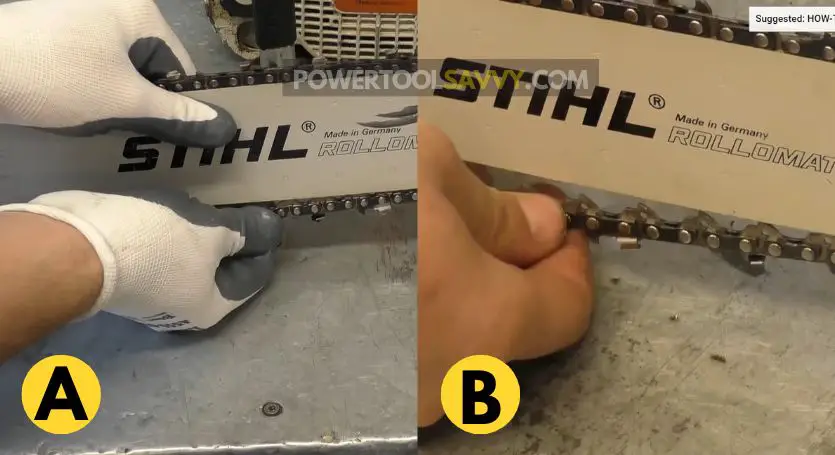
✍️NOTE: Be careful not to over-tighten the chain, as this might cause damage to your bar and chain sprocket. You should be able to move the chain freely around the bar.
For more info on this topic, check out this article where I’ve covered how tight should a chainsaw chain be in great detail!
Make Sure Your Chainsaw is Oiling
As I’ve already mentioned, a chainsaw chain mainly goes slack when it gets hot. (because then it expands!)
Frankly speaking, there’s literally NO way to completely prevent this from happening.
But the bar and chain lubrication system in your saw can help reduce the amount of heat generated and keep the chain cool for longer.

So, if you don’t want to tighten your chainsaw chain every 15 minutes or so, make sure your bar and chain lubrication is working fine!
To do that: 👇
- Check if the oiler holes are blocked or clogged up. Take a screwdriver or a wire to clear the debris out of the holes.
- Make sure you use the right viscosity and grade oil for your saw.
- Check the oil reservoir before you start cutting (FILL it up if it’s low!)
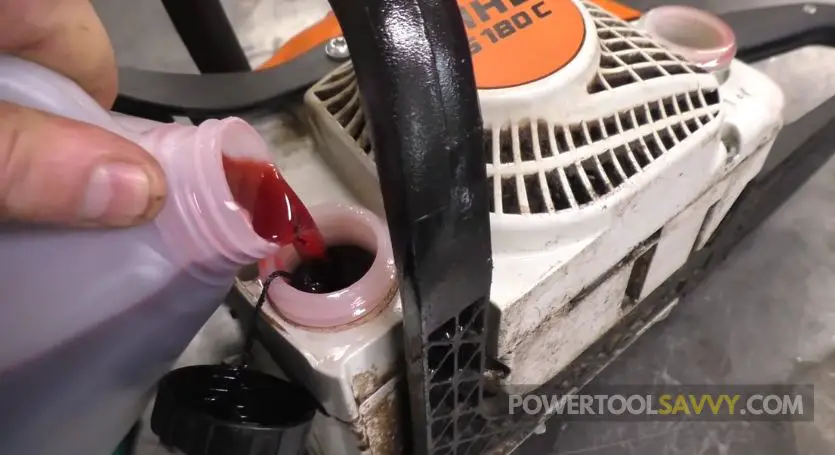
That’s not all!
Here’s one of my favorite methods to check if my chainsaw is oiling properly: 👇
- Point your saw bar at a light-colored surface and throttle it up.
- If you see oil droplets flying off the bar, that’s a good sign! That means your lubrication system is working fine.
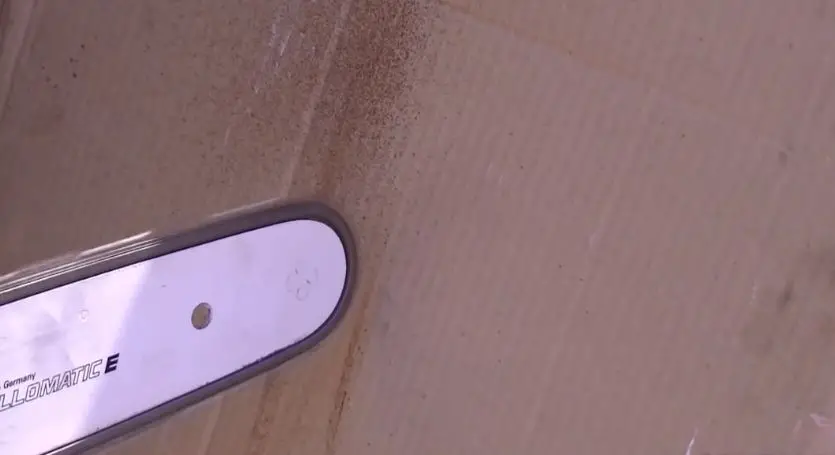
However, If you can’t see any oil dripping or misting, then you need to give the oiler system a thorough checkup.
Keep Your Chain As Sharp As Possible
It’s no secret – Sharpening the chain is IMPORTANT!
Ummm…
But how does it help keep the chain tight for longer? 🤔
Well, a sharp chain cuts through wood like butter and creates less friction. This results in less heat and therefore, the chain doesn’t stretch as much.
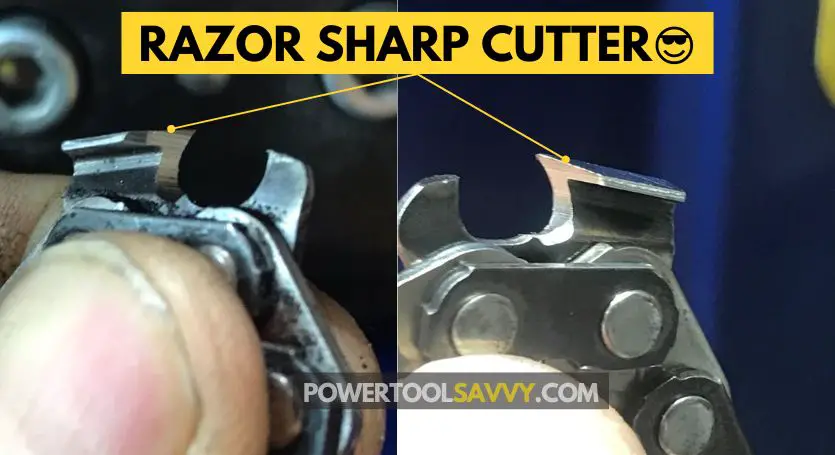
On the other hand, dull chains have difficulty cutting through wood, which creates more friction and will eventually cause the chain to stretch.
Clear??
Now you might be wondering – how do I know if my chain is dull?
To make it EASY for you, here are some visual signs that your chain is dull: 👇
- You saw is producing powdery sawdust instead of nice fat chips!
- You are having difficulty cutting in a straight line. (Learn: How to Fix Chainsaw that Not Cutting Straight?)
- Your saw is burning the wood and trying to kick back the bar.
- You have to push harder on the saw with each cut.
- The cutters leaving a fuzzy finish on the cut surfaces.
If you are familiar with any of these symptoms, then it’s time to sharpen your chain!
Here’s a video that explains how to sharpen a chainsaw chain the right way: 👇
Take Breaks Between Your Cutting Sessions
Do you know what?
Take breaks between your cutting sessions!
It will help the chain to cool down and prevent it from stretching. (Plus, your body will thank you for it!)
(If you’re like me, click some photos and share them with your buddies)
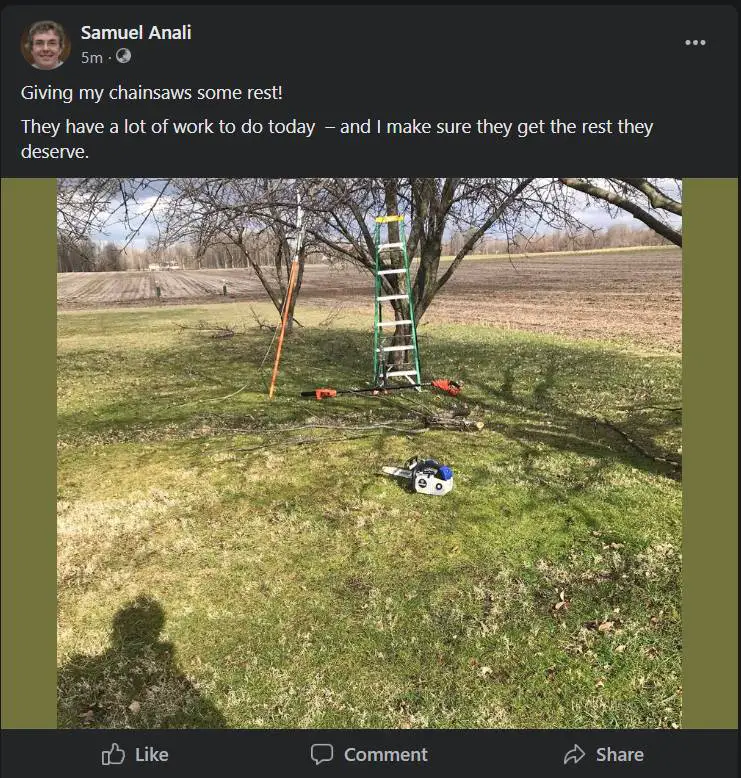
I know it’s hard to take breaks when you’re in the thick of a project, but trust me – it will be worth your while.
If you ask me, I give my saw a break for at least 10 minutes after every 30-40 minutes ⏱️ of usage. This helps keep the chain tight and operational for a longer period of time.
Don't Push Your Chainsaw Hard While Cutting
It’s a common mistake that many people make – they push the chainsaw too hard.
Don’t do it!
Forcing the chain too hard will cause it to stretch much faster and cause the chain to get loose quickly. Plus, it can cause the chainsaw to smoke or pop the chain off your bar and injure you.
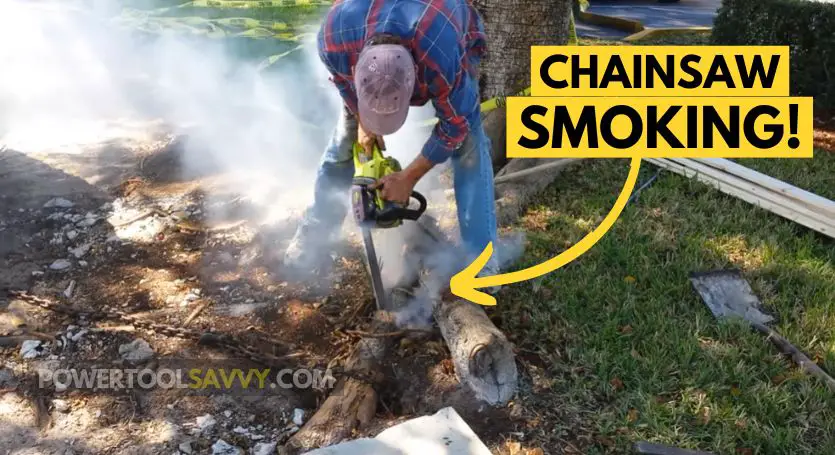
(Here’re 5 other reasons that can cause your chainsaw to smoke!)
So, let the saw do the work and let itself sink through the wood. The weight of the saw is enough to make a cut, you don’t have to help it! (unless the chain is dull, of course)
This will help maintain tension in the chain for longer periods of time.
Avoid Cutting Dirty Wood and Hitting Abrasive Materials
Can you guess what the biggest enemy of the chainsaw chain is?
Yup, that’s right!
Logs and branches that are dirty or contain metal nails, stones, spikes, or other hard materials.
If your chain hits such materials, it can cause the teeth to get blunt quickly and eventually make the chain tension loose.
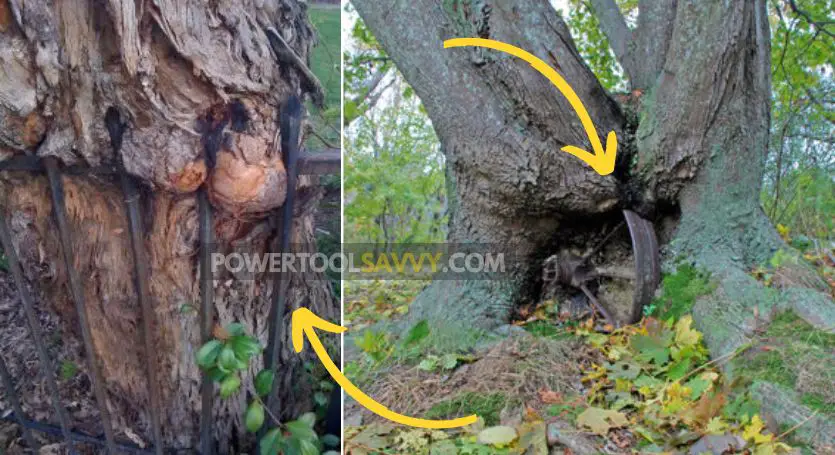
Learn More: Can a Chainsaw Cut Through Metal?
So, avoid cutting such things and try to opt for cleaner wood pieces as much as possible.
If you have no option but to cut dirty logs, make sure you remove the bark and check for any embedded objects before starting.
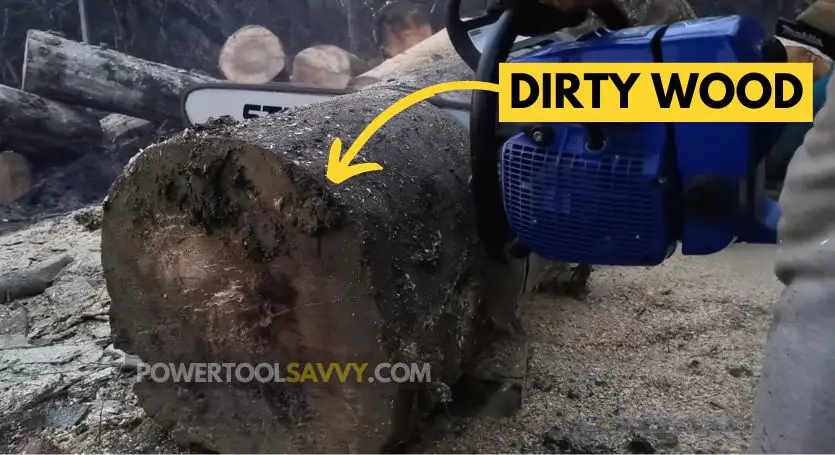
Also, hold your saw firmly while cutting and avoid hitting the ground.
Use a Pre-Stretched Chain Instead
Using a pre-stretched chain is another way to keep your tight for longer.
(In case you’re hearing that for the first time, let me explain it a bit 🙂)
Pe-stretched chains are specially designed chains for added tension and stiffness. They’re pre-heated from the factory and stretched out to their maximum tension, and then cooled back into a rigid form.
So, they don’t expand as much as regular chains do!
As a result, they stay tight for longer and help you get more work done with less need to adjust the tension in the chain.
I’ve tested out a bunch of pre-stretched chains and found they really stay tight for longer. I recommend using one.
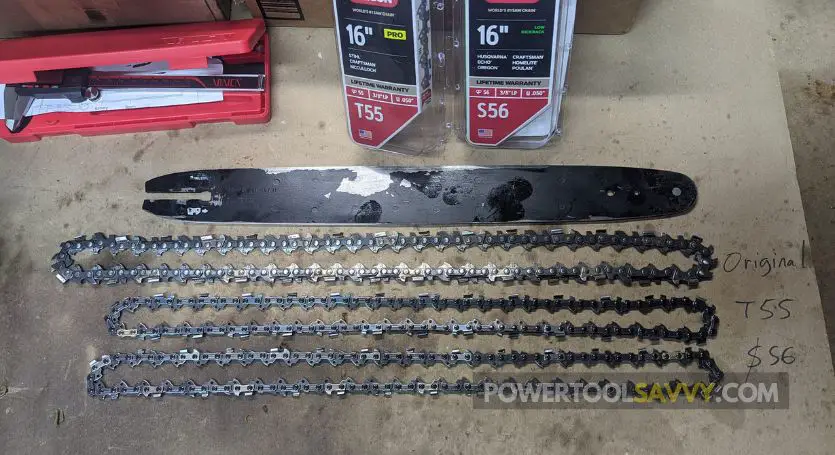
However, these chains are a bit more pocket heavy than the regular ones.
And if I’m not wrong, right now only Stihl and Husqvarna make pre-stretched chains. (CORRECT me if I’m wrong! 🐸)
BONUS: Replace Your Chain Sprocket if It's Worn Out
Chainsaw chain sprockets are designed to hold your chain and keep it tight.
But, over time, the sprocket can become worn out, making it difficult to keep your chain at its optimal tautness. (Here’s how a worn-out sprocket looks: 👇)
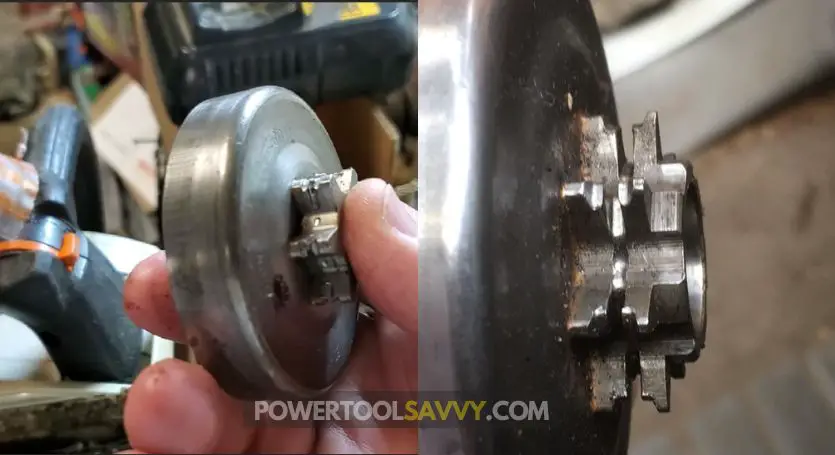
(The grooves look scary, don’t they?)
So, if your chain sprocket looks something like this, then It won’t be able to hold your chain for long. You need to replace it ASAP!
Symptoms of a badly worn-out chain sprocket include: 👇
- Crooked cuts
- Frequent chain coming offs
- Unusual noises or vibration
- Poor efficiency
I have a detailed guide on when to replace a chain sprocket. Don’t forget to check that out!
How Often Does a Chainsaw Chain Usually Need to Be Tightened?
You should tighten your chainsaw chain as soon as it gets loose and starts to sag below your guide bar. Otherwise, the chain will keep getting looser and eventually come off completely. Also, it’s a good practice to tighten the chain once every tank of fuel.
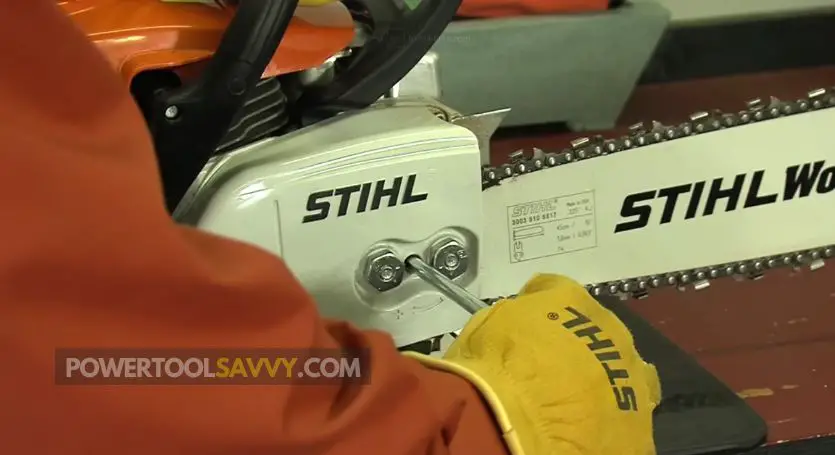
You should always keep an eye on your chainsaw chain throughout the job.
If it gets loose, don’t get MAD! Just, take a break and tighten it up!
However, there are a few other factors that might require you to tighten the chain more frequently. Like – 👇
- The type of wood you’re cutting,
- The age of your chain,
- The sharpness of your chain,
- The amount of work you put into your saw each day, and so on.
If you want to learn more, read this article where I’ve discussed how often a chainsaw chain needs to be tightened in great detail!
GoodBye Words!
That’s all I have for today!
Hopefully, by following the tips outlined above, you can make sure your chainsaw chain is tight and secure for longer.
Happy sawing!



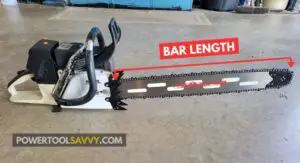
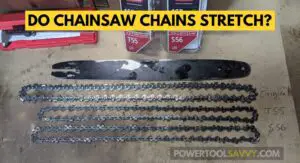

Pingback: Chainsaw Chain Keeps Coming Loose? Here's How You FIX It!